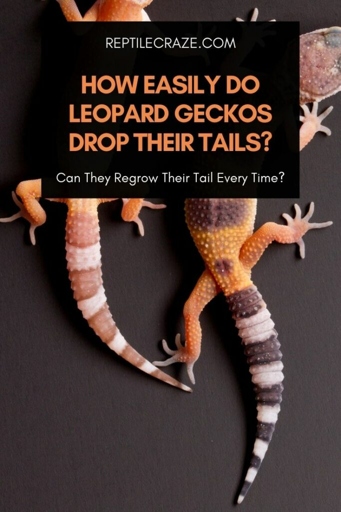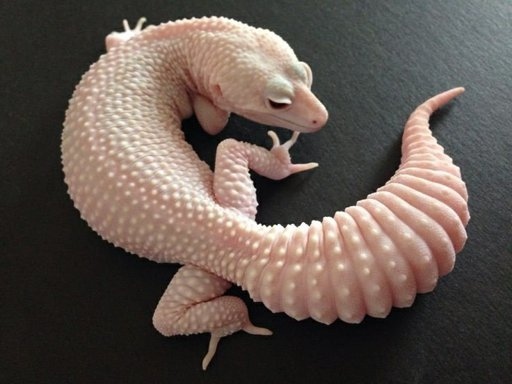Leopard geckos are a type of lizard that is native to parts of Asia and Africa. These lizards are known for their spotted patterns and their long, fat tails. The tail of a leopard gecko is about one-third of its total body length. The tail is used for fat storage, which is why it is so much larger than the tails of other lizards. When food is scarce, the leopard gecko can use the fat in its tail as a source of energy. The tail also helps the lizard balance when it is climbing.
Leopard Gecko Tails Store Fat
Leopard geckos are a type of lizard that is native to parts of Asia and Africa. This fat storage allows the lizards to survive during periods of food scarcity. These lizards are known for their ability to store fat in their tails.

The leopard gecko’s tail is composed of two sections: the base and the tip. The base of the tail is where the majority of the fat is stored. The tip of the tail is used for balance and is much thinner than the base.
However, the new tail will not have the same amount of fat storage as the original. This is because the fat is stored in the base of the tail and the new tail will not have a base. When a leopard gecko loses its tail, it can regrow the lost portion.
How Long Can a Leopard Gecko Survive Using the Fat in its Tail?
Leopard geckos are able to survive for long periods of time without food by using the fat stored in their tails. In the wild, leopard geckos typically only live for 5-10 years, but captive geckos can live for 20 years or more. When a leopard gecko is well-fed, its tail can make up about 20-30% of its body weight and can provide the gecko with enough energy to last for several months.

While a leopard gecko can survive for a long time using the fat in its tail, this is not a sustainable long-term solution. If a leopard gecko does not have access to food for an extended period of time, it will eventually starve to death. In the wild, leopard geckos typically only live for 5-10 years, but captive geckos can live for 20 years or more.
Gecko Tail Waving
Leopard geckos are known for their tail waving behavior. The tail waving behavior is thought to be a way for leopard geckos to communicate their dominance to other leopard geckos. When a leopard gecko waves its tail, it is actually trying to communicate with other leopard geckos.

The tail waving behavior is thought to be a way for the leopard gecko to show its dominance over the other leopard gecko. The tail waving behavior is also thought to be a way for the leopard gecko to show its interest in the other leopard gecko. Leopard geckos will often wave their tails when they are first introduced to another leopard gecko.
The tail waving behavior is thought to be a way for the leopard gecko to make itself look bigger and more intimidating to the other animal. Leopard geckos will also sometimes wave their tails when they are threatened by another animal.
So why do leopard geckos wave their tails? The tail waving behavior is thought to be a way for leopard geckos to communicate their dominance, interest, or fear to other leopard geckos.
What About Tail Rattling?
The tail will eventually grow back, but it will be shorter and thinner than the original. Leopard geckos are known for their ability to drop their tails as a defense mechanism. When a predator grabs the leopard gecko by the tail, the tail will detach at a pre-determined fracture site and the gecko will make its escape.

While a detached tail may help the leopard gecko escape a predator, it also puts the gecko at a disadvantage. A shorter, thinner tail means that the gecko has less fat reserves to help it survive during lean times. In the wild, a leopard gecko with a rattling tail is likely to be passed over by potential mates in favor of a healthier individual.
There are a few things that leopard gecko owners can do to help their pets avoid tail rattling. And finally, don’t handle the gecko too much. First, make sure that the enclosure is escape-proof. A leopard gecko that feels safe and secure is less likely to drop its tail. Second, provide plenty of hiding places and perches so that the gecko can avoid potential predators. A gecko that is constantly being handled is more likely to drop its tail out of stress.
With time, the tail will grow back and the gecko will be able to put its escape-artist antics behind it. And while a detached tail may be a nuisance, it’s not the end of the world. With a little care and attention, leopard geckos can be healthy and happy pets.
Leopard Geckos Can Amputate Their Own Tails
They are relatively easy to care for and are known for their docile nature. One of the most interesting things about leopard geckos is their ability to amputate their own tails. Leopard geckos are one of the most popular reptiles kept as pets.
When a leopard gecko feels threatened, it will drop its tail. The tail will eventually grow back, but it will be shorter and thinner than the original. The tail will continue to wiggle, which distracts the predator and gives the gecko time to escape.

Some leopard geckos will drop their tails even when they are not threatened. This can be due to stress or poor nutrition. If you think your gecko is dropping its tail too often, it is important to consult a veterinarian.
Frequently Asked Questions
1. What makes leopard gecko tails fat?
There are several reasons why leopard gecko tails are fat. One reason is that they store fat in their tails as a way to survive lean times or periods of drought. Another reason is that the fat helps them balance when they are climbing.
2. Do all leopard geckos have fat tails?
No, not all leopard geckos have fat tails. Some may have thinner tails if they are well-fed and have never experienced a period of drought or famine.
3. Why do leopard geckos need to store fat in their tails?
Leopard geckos store fat in their tails as a way to survive lean times or periods of drought. The fat helps them balance when they are climbing and also provides them with energy when food is scarce.
4. How do leopard geckos’ tails help them balance?
The fat in leopard geckos’ tails helps them balance when they are climbing.
5. Do leopard geckos’ tails always have the same amount of fat?
No, leopard geckos’ tails do not always have the same amount of fat. The amount of fat in their tails can vary depending on how much food they have been able to eat and whether they have experienced a period of drought or famine.
Final thoughts
Leopard geckos’ tails are fat because they are used for fat storage. When leopard geckos are not able to find food, they can rely on their tails for energy. Additionally, leopard geckos use their tails for balance and to help them climb.
